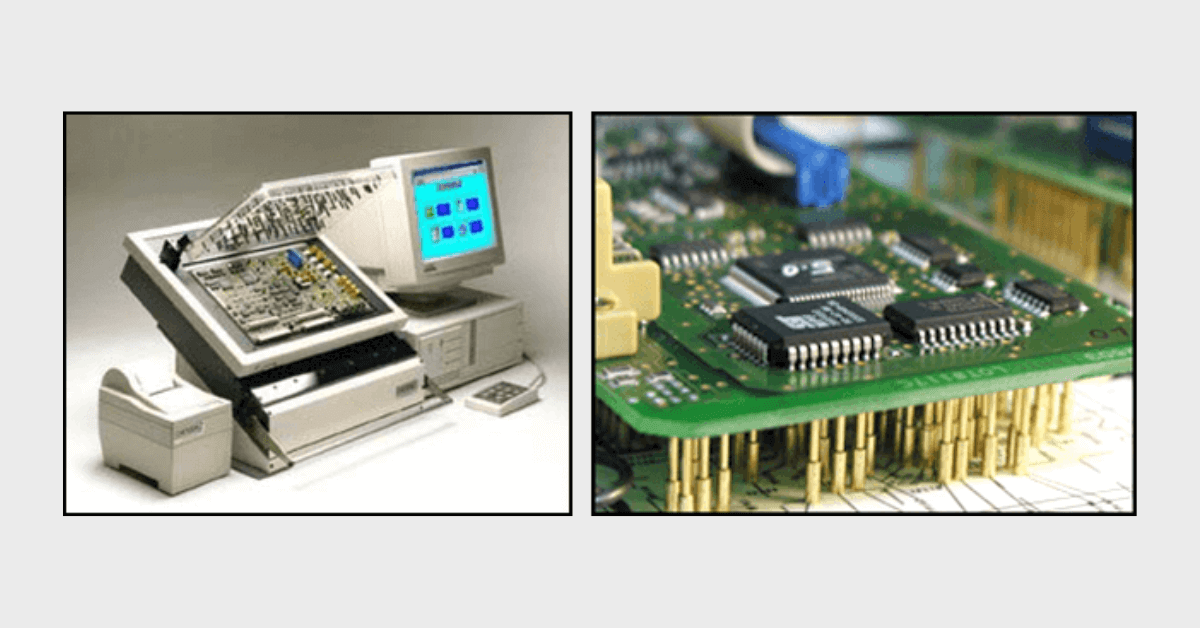
A Manufacturing Defect Analyzer (MDA) is a tool that uses in-circuit test techniques to enable the detection of manufacturing defects within a printed circuit board assembly. Since the majority of manufacturing defects are simple connection issues, an MDA is restricted to making measurements of continuity.
MDA Basics
A MDA tester is based on the condition that the design of a board has been previously proven, parts are reliable, and few defective components will be delivered. Therefore only manufacturing defects will impact the performance of a board or assembly (opens, shorts, missing components, etc.). Testers can often detect the presence of resistors, capacitors, and transistors. Detection of ICs is possible by accessing their protection diodes to imply the device is correctly placed.
The tester makes connection via a fixed “bed- of- nails” fixture. Therefore, a custom fixture is required for each board to be tested.
The PCB layout data can be used to generate the fixture design and the test program.
| Advantages | Disadvantages |
|---|---|
| Less costly than a standard or full ICT | Limited diagnostic capability |
| Detects opens and shorts | Custom “bed-of-nails” fixture |
| Some limited component diagnostic capability | Component access |
An MDA system is much simpler than a full ICT, but in many situations may be more than satisfactory.


